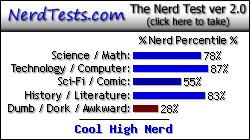Science - Vitamin C And Cancer
 Linus Pauling insisted that Vitamin C was an effective anti-carcinogen. However, research has not backed him up - so far. New studies from the National Institute of Diabetes and Digestive and Kidney Diseases in Bethesda Md show that although people quickly clear Vitamin C from their bodies when they take it orally, intravenous doses showed blood concentrations up to 70 times as high. The high blood concentrations do not show any adverse effects.
Linus Pauling insisted that Vitamin C was an effective anti-carcinogen. However, research has not backed him up - so far. New studies from the National Institute of Diabetes and Digestive and Kidney Diseases in Bethesda Md show that although people quickly clear Vitamin C from their bodies when they take it orally, intravenous doses showed blood concentrations up to 70 times as high. The high blood concentrations do not show any adverse effects. To test how higher concentrations of Vitamin C might affect cancer, Mark Levine of the Institute applied Vitamin C at concentrations similar to those of the injected volunteers to healthy human and mouse cells and various types of cultured cancer cells. They found that an hour's exposure killed 50 per cent of cancer cells in 5 out of 10 cancer-cell cultures. Further tests showed that cancer cells converted Vitamin C into hydrogen peroxide, which kills cells. Report from Science News, Vol. 168.
Labels: cancer, cures, health, illness, science







1 Comments:
Science Daily — Nearly 30 years after Nobel laureate Linus Pauling famously and controversially suggested that vitamin C supplements can prevent cancer, a team of Johns Hopkins scientists have shown that in mice at least, vitamin C - and potentially other antioxidants - can indeed inhibit the growth of some tumors ¯ just not in the manner suggested by years of investigation.
The conventional wisdom of how antioxidants such as vitamin C help prevent cancer growth is that they grab up volatile oxygen free radical molecules and prevent the damage they are known to do to our delicate DNA. The Hopkins study, led by Chi Dang, M.D., Ph.D., professor of medicine and oncology and Johns Hopkins Family Professor in Oncology Research, unexpectedly found that the antioxidants' actual role may be to destabilize a tumor's ability to grow under oxygen-starved conditions. Their work is detailed this week in Cancer Cell.
"The potential anticancer benefits of antioxidants have been the driving force for many clinical and preclinical studies," says Dang. "By uncovering the mechanism behind antioxidants, we are now better suited to maximize their therapeutic use."
"Once again, this work demonstrates the irreplaceable value of letting researchers follow their scientific noses wherever it leads them," Dang adds.
The authors do caution that while vitamin C is still essential for good health, this study is preliminary and people should not rush out and buy bulk supplies of antioxidants as a means of cancer prevention.
The Johns Hopkins investigators discovered the surprise antioxidant mechanism while looking at mice implanted with either human lymphoma (a blood cancer) or human liver cancer cells. Both of these cancers produce high levels of free radicals that can be suppressed by feeding the mice supplements of antioxidants, either vitamin C or N-acetylcysteine (NAC).
However, when the Hopkins team examined cancer cells from cancer-implanted mice not fed the antioxidants, they noticed the absence of any significant DNA damage. "Clearly, if DNA damage was not in play as a cause of the cancer, then whatever the antioxidants were doing to help was also not related to DNA damage," says Ping Gao, Ph.D, lead author of the paper.
That conclusion led Gao and Dang to suspect that some other mechanism was involved, such as a protein known to be dependent on free radicals called HIF-1 (hypoxia-induced factor), which was discovered over a decade ago by Hopkins researcher and co-author Gregg Semenza, M.D., Ph.D., director of the Program in Vascular Cell Engineering. Indeed, they found that while this protein was abundant in untreated cancer cells taken from the mice, it disappeared in vitamin C-treated cells taken from similar animals.
"When a cell lacks oxygen, HIF-1 helps it compensate," explains Dang. "HIF-1 helps an oxygen-starved cell convert sugar to energy without using oxygen and also initiates the construction of new blood vessels to bring in a fresh oxygen supply."
Some rapidly growing tumors consume enough energy to easily suck out the available oxygen in their vicinity, making HIF-1 absolutely critical for their continued survival. But HIF-1 can only operate if it has a supply of free radicals. Antioxidants remove these free radicals and stop HIF-1, and the tumor, in its tracks.
The authors confirmed the importance of this "hypoxia protein" by creating cancer cells with a genetic variant of HIF-1 that did not require free radicals to be stable. In these cells, antioxidants no longer had any cancer-fighting power.
The research was funded by the National Institutes of Health.
Authors on the paper are Dean Felsher of Stanford; and Gao, Huafeng Zhang, Ramani Dinavahi, Feng Li, Yan Xiang, Venu Raman, Zaver Bhujwalla, Linzhao Cheng, Jonathan Pevsner, Linda Lee, Gregg Semenza and Dang of Johns Hopkins.
Note: This story has been adapted from material provided by Johns Hopkins Medical Institutions.
Fausto Intilla
www.oloscience.com
Post a Comment
<< Home